Parasites form a major threat to the health and well-being of pigs and are a particular threat to the small pig keeper where pens and shelters are permanently occupied, and open ground is used continually. This paper will discuss skin parasites otherwise referred to as ectoparasites.
Sarcoptic Mange
Sarcoptes scabei var suis is a host specific mite - a parasitic insect - that is spread from pig to pig by direct contact or by vectors. It can persist in the environment for up to three weeks in ideal conditions and disease can then result from pig contact with a contaminated environment including transport.
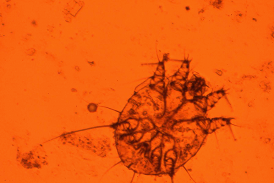
Fig 1: Sarcoptes scabeii var suis - the cause of sarcoptic mange in pigs
The mite can occasionally affect stockpeople, although they are "dead end" hosts, i.e. they cannot spread the disease. Continual rubbing and head shaking should be viewed as a likely indicator of mange in pigs.
Clinical signs
The mite burrows into the skin and lays eggs in tunnels within the skin. This causes severe irritation with the pig rubbing its body on any available surface continually. The ears are a particularly favoured site of infestation leading to head shaking and secondary ear damage (haematomas) - (Figs 2 and 3).
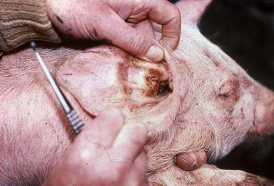
Fig 2: Active infection in the ear of a pig
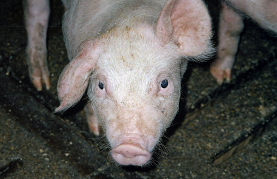
Fig 3: Aural haematoma in a young growing pig - a common sequel to mange infestation and head shaking
Middle ear damage can also result. The disease can thus often be detected audibly as much as visually.
The skin may be reddened and the ears waxy, although secondary skin damage (cuts and abrasions) and Staphylococcal infection (Greasy Pig Disease) are common. This form of the disease is mostly seen in young growing pigs of 8-12 weeks of age. Greasy pig disease is not irritating and on its own can thus be distinguished from mange.
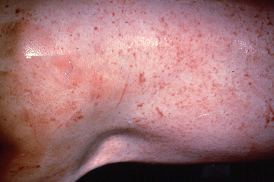
Fig 4: Hypersensitive reaction to mange mites in a growing pig
As the disease progresses in the individual, chronic lesions will occur. Thick encrustations in the ears, behind the elbows and on the anterior surface of the back legs are the most common signs with the whole skin discoloured and scurfy. Irritation is still evident. In untreated growing pigs so affected, the skin can become thickened to such an extent that it requires removal (and subsequent downgrading) at slaughter.
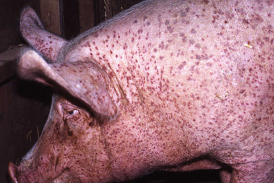
Fig 5: Severe hypersensitive (allergic) mange in a sow
The allergic form of mange is seen in older pigs and adults and probably represents re-infestation of a sensitive individual. Huge numbers of small round red pimples occur over the whole body and take several weeks to disappear following treatment.
(This form of the disease forms the basis for the 1-3 scoring system for papular dermatitis used as part of the disease monitoring process within the British Pig Health Scheme. (Fig 6).)
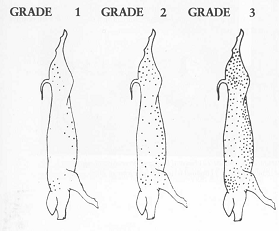
Fig 6: Papular dermatitis scoring at slaughter
Because of the irritation, damage from aggression may be a feature of mange and may include tail and ear biting, vulval biting and savaging of piglets. In addition, growth rates will decline by up to 15% and feed usage in heavily infested sows will be increased by 10% or more.
Chronically infected boars may fail to work due to the discomfort causing infertility that may be noticed as the first sign of problems on the farm. Lesions can be severe inside the front and back legs.
Chemicals within cigarette smoke have a dramatic effect on a pig with mange with an increase in the levels of irritation that can reach the frantic level. Such effects are not seen on uninfested pigs.
Lice
The pig can be infested with the large sucking louse Haematopinus suis which whilst concentrating around the ears and skin folds of the upper legs can easily be seen on the body of white pigs (fig 7). Eggs laid on hairs (nits) develop into adult forms over a four-week period but the louse is dependent upon the pig and can only survive a few days off the body. It is possible for the eggs to survive for a few weeks in bedding etc.
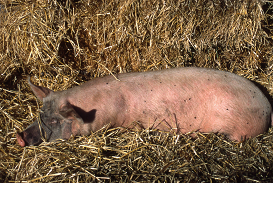
Fig 7: Sucking louse (Haematopinus suis) infestation in a pig. (close-up below)
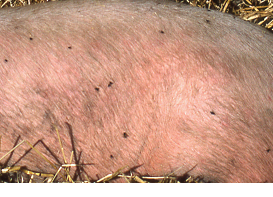
As with mange, with which it can occur separately or together, lice cause intense irritation and restlessness, although head shaking is not a common feature. The louse is host specific and does not affect man.
As a blood sucking parasite, the louse is capable of spreading blood borne diseases from pig to pig (eg viral infection such as PRRS, PCV2 and Swine Pox).
Treatment
Animals that are clinically affected with any of the forms of mange or lice described should be treated without delay. The most effective treatment is injectable Avermectin and in severe chronic cases a double treatment 10-14 days apart is appropriate.
Of the two chemical forms of Avermectin available, ivermectin has a shorter duration of action than doramectin and is painful when injected, although the pain is very short lived (1-2 minutes).
(Historically, topical organophosphates were used but these are no longer available. Similarly, topical amitraz is no longer licensed for used in pigs.)
In pigs close to slaughter, the prolonged meat withdrawal periods associated with the above products may preclude their use. In such cases, in feed ivermectin can be used.
Control
Whilst most commercial breeding pigs sold by reputable UK seedstock companies are free of mange and lice, both parasites are present on many small holdings and in pigs derived from private sellers.
Because disease spreads by contact, there is little point in attempting control without treating all pigs within a population.
If breeding pigs are kept, a single treatment of sows 2-3 weeks before farrowing will produce 'clean' piglets but re-infections of the sow and litter will occur if they subsequently come into contact with non-treated pigs or an infected environment.
A regular treatment regime of all breeding pigs twice yearly may be more appropriate, with young pigs treated via the feed after weaning using ivermectin premix.
Cleaning of the environment should be part of a control programme with concrete and wooden surfaces washed, and disinfected if necessary, with a scrubbing brush. Thorough drying of the environment will assist killing of adults, eggs and larvae.
Leaving open ground unoccupied for one month - particularly in summer - is likely to lead to dying off of skin parasites, and treating prior to reoccupation may be sufficient to break the cycle of infection.
A range of protocols has been developed to eradicate Mange from herds involving a combination of medication and hygiene measures. Each programme must be tailored to the needs of the farm and should be drawn up in consultation with the veterinary advisor. Prolonged meat withdrawal periods for most of the effective injectable Avermectins make a whole herd eradication programme in a breeder/feeder farm difficult without prior removal of grower finisher pigs approaching slaughter weight but can be applied particularly as part of a wider strategy of disease elimination where growing pigs have been removed off site. They can be very useful in eradicating mange and lice from small populations where continual production to slaughter does not occur.
Consideration must also be given to the health of any future additions to the herd. If you eradicate mange and lice from your herd you must avoid reintroducing them. Therefore:-
-
ensure disease freedom in incoming stock via veterinary liason
-
isolate incoming stock (minimum 6 wks)
- isolate and treat any pigs that have had contact with outside animals such as at shows or where boars are shared
-
treat twice during isolation if in doubt
Unlike most serious diseases of pigs in UK, mange does not kill and as such it is often overlooked as a limit on welfare and productivity.

